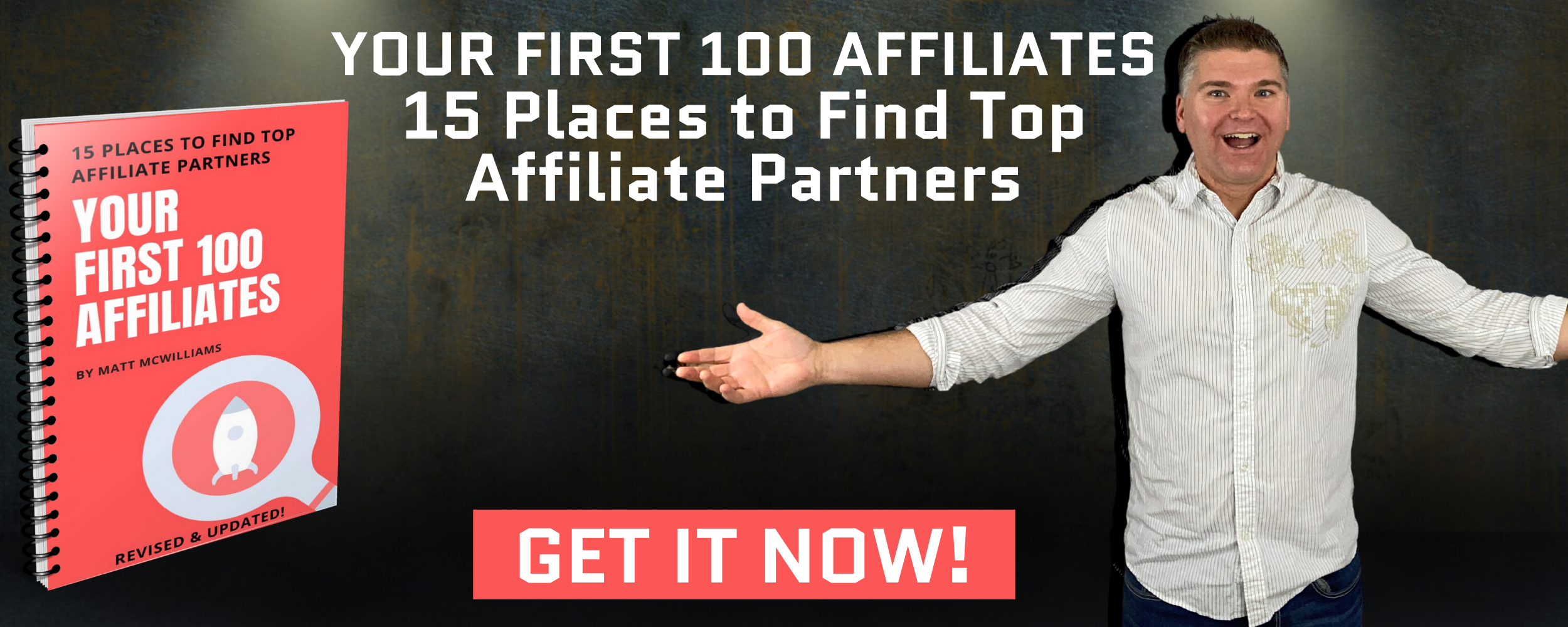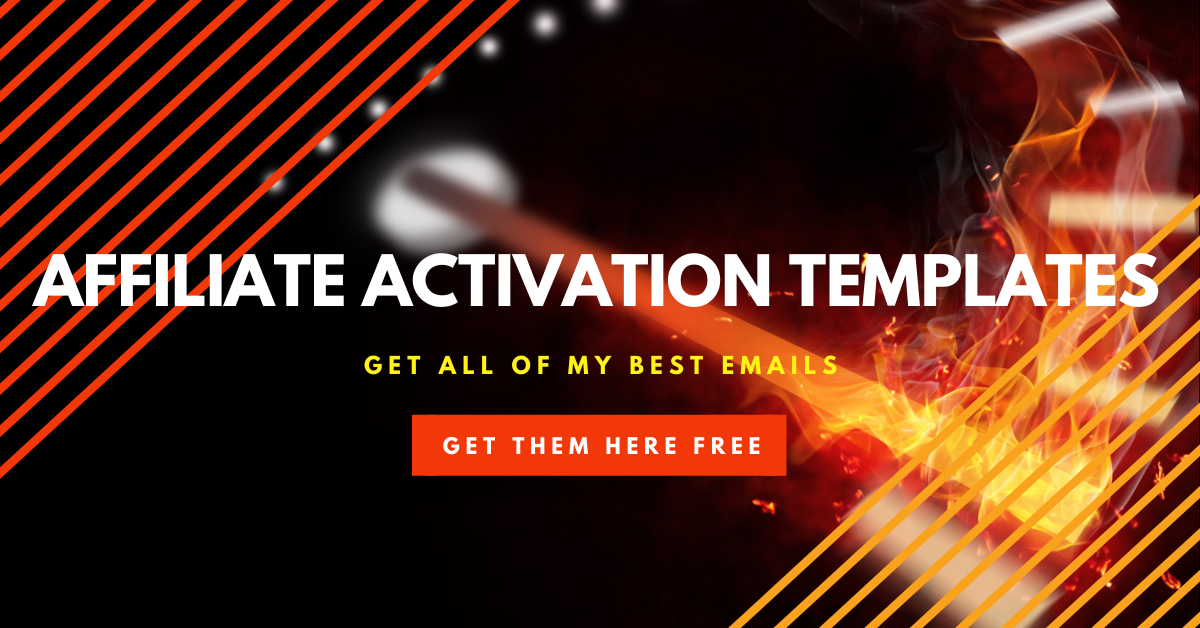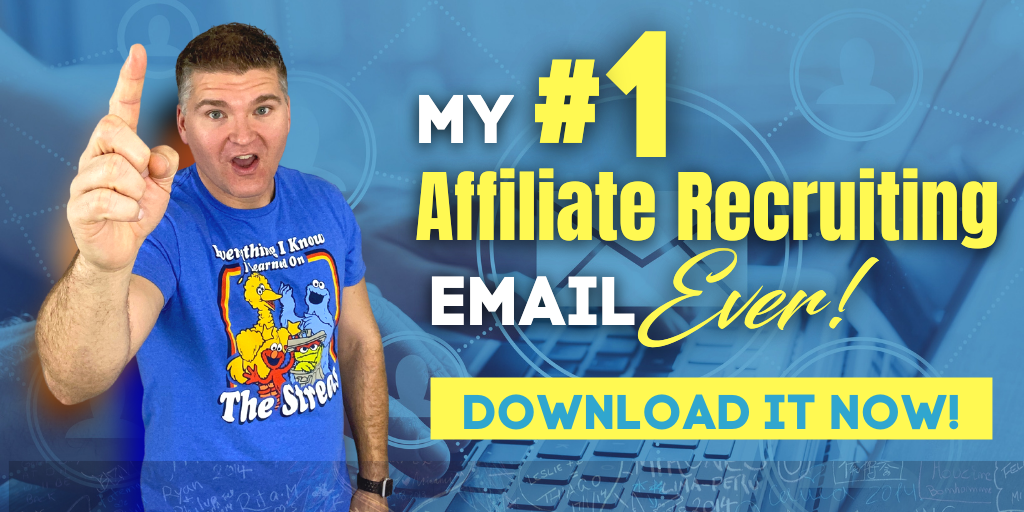The single best way to improve your affiliate program is…to improve your conversions! Better conversions means more sales. It means happier affiliates. It means getting more affiliates to sign up in the first place. And it means major growth. Today, we’re going to fix your funnel!
Click Here for The Written Transcript of This Episode
If you are ready to take your business to the next level and start an affiliate program, start with my free report, Your First 100 Affiliates. This report takes nearly two decades of experience, trial and error, and lessons learned about finding top affiliates in nearly every conceivable niche and puts them all into one report. Grab your copy here!
Links Mentioned in this Episode
Text me at 260-217-4619
Don’t Miss An Episode – Subscribe Below
Previous Episodes of The Affiliate Guy
Affiliate Marketing Lesson: Shifting From Promoting Free Content To A Paid Product
Book Launch Party: An Interview with Matt About Turn Your Passions Into Profits
Special Episode: Highlights from My Whirlwind Book Tour
The Untold Stories from Turn Your Passions Into Profits (Behind The Scenes Peek at My Book)
Ten Resolutions for Affiliate Marketers and Affiliate Managers
2023 Affiliate Marketing Predictions
Fix Your Funnel: How to Increase Sales and Make Your Affiliates More Money with John Ainsworth
The single best way to improve your affiliate program is this, improve your conversions. Better conversions means more sales. It means happier affiliates.
It means getting more affiliates to sign up in the first place, and it means major growth. Today, we’re going to fix your sales funnel.
So obviously, I’m a big believer in having more affiliates, but most people think that the only way to grow their affiliate program is to have more affiliates.
And yes, you want that, go grab my free report and you’ll get more affiliates. Matt Mcwilliams.com/FIRST100. Get my report. Your first 100 affiliates. That’s important.
That’s one side of the equation. You also need to focus on your conversions, having better conversions across the board.
So better conversions from click into lead, better conversions from leads into sales, better up sales, getting more, higher average order size, more money.
Happier affiliates who promote more often and then they refer others. They’re easier to recruit because you’ve got a higher EPC earnings per click. All of those things.
You need all of those things. And so, yeah, you go out, you work your b*** off for your first 20 affiliates. But if you get better conversions, you’ve got higher conversions across the board.
You can get another five to ten from referrals, but if you don’t have a great conversion rate, you’re never going to get those referrals.
So not only are you not going to get to 30 and get those ten free affiliates, but you’re going to lose half or more of your 20 that you worked your b*** off for.
More profits also means higher payouts if needed. The more money you’re making, if you’re paying per sale and you’re only making, say, $500 per sale and you’re paying $200, you’re paying 40%.
So you’re making $300. But if you increase that to 1000 and you’re paying 400, you’re making $600, you’re making twice as much money. That means you can do more prizes to incentivize them or a little bit higher payouts.
Now, the thing is, I’m not an expert on these things. I don’t know all there is to know about improving your conversions. Yeah, I know a few things. I know a lot.I know how to do, you know, a few things that I could share.
But I also know when to invite the experts, which is what I did today. I’ve got my friend John Ainsworth on from data driven marketing or data driven marketing. Depends on where you’re from.
Need help activating your affiliates? Use my proven email templates for getting inactive affiliates in the game and making sales! Get them here!
And he is one of the world’s leading experts on fixing your funnel. He’s also a great guy, and I wanted to introduce him to you today and share some of his strategies for fixing your funnel.
So you can have all of these things again. Ultimately, you can have more affiliates and more income. So let’s dive right into my it’s a pretty quick interview, about 25 minutes or so with John Ainsworth.
=============
Matt: John, welcome, my friend.
John: Thanks very much.
Great to be here, man.
Matt: It’s so good to have you. I’m so excited because we talk a lot on the show about the traffic side of things.
We talk about getting affiliates, growing affiliates, motivating affiliates. And we need to do that. What do you have? Traffic core conversions. It’s like chicken or the egg. You can’t have one without the other.
But today I want to shift gears, and this is part of a little series we’re doing, and we’re going to talk about that conversion side because you’ll hear me say so many times, you’ve heard me say it, affiliates affect everything, and everything affects affiliates.
We tell our clients all the time, affiliates change the numbers. Affiliates convert better than most other forms of traffic that tweaks your numbers.
And also it affects maybe who you might have an expanded audience coming in, but different people outside of your niche coming into your audience. That’s going to affect your conversions. But everything affects affiliates.
If you change one element on your landing page and it lowers or raises conversions, affiliates to make less or more money, that affects them.
So John is one of the world’s leading experts on this side of things, especially with online courses, how to really dial in and nail down your funnel.
So, John, I’m super excited and I think a good starting point is just kind of some of the optimization strategies that you share if you think that’s a good starting point.
Otherwise, like I told John before we went live, guys, like, I’m letting him kind of dictate what we talk about today. I want to I’m going to be taking notes.
So if you guys see me looking down, that’s me writing notes. So John, I’ll let you take it away and we’ll just kind of see where this goes.
John: Yeah. So there’s three main areas that people can work on that is gonna increase the revenue that they’re making.
When you’re selling a course, a membership, some kind of digital product, those three things are increase the revenue per sale, increase the percentage of people who buy from you each month, and then increase your email list size.
Now, when you’ve got traffic coming in from affiliates, I’m going to come back and ask you a bit more about this just to double check for your audience.
But when you got traffic coming in from affiliates, one of the things to have in place is making sure that you’re increasing the revenue per sale you’ve got.
And there’s two ways you can do that. Most people miss this, and they are the 80 20 to the 80 20. They are the things that have a dramatic impact.
It’s not like it’s no work, but relative to most stuff in business, it’s almost no work. So order bumps for anybody.
If you don’t know if you’re listening to this and you’re not sure what it is, an order bump is when you go to the checkout page and there is an additional offer on the page that is sold as a tick box.
So you’re on the checkout page, not the sales page. You’re on the checkout page and there’s a tick box and a couple of lines of text explaining about an additional offer that the person can get.
Let’s say that you’re selling a course for $79. Your order bump might be another course, or some workbooks, or some Q and A, like FAQ webinar that you’ve done, or some interviews with people who’ve gone through the number of different things that you could have there.
Like anything you’ve got that kind of fits along with what you’re selling. And it might be selling for 27 or $37, something in that kind of ballpark.
As an idea, it’s normally about a third of the price of the main product that you’re selling. That answers my question. I was going to ask you what you’ve seen.
Matt: I think of the order bump as like the checkout aisle of the grocery store, probably not quite that low, but you spent $200 on groceries. You bought everything you need, everything you came for, your list.
You got everything on your list, right? We went the other day about $200. We got the fruits, we got the veggies, we got the ketchup, we got the milk and all the stuff we needed.
And then we’re there in the checkout aisle. And most of the stuff there is a dollar to $4. But the margins, this is one of the keys, like the margin on those things are virtually like 50%, which is really high in a grocery store.
They buy those candy bars for forty cents and sell them for a dollar. So think of it that way. What’s that checkout aisle type thing that makes it really easy for people?
You mentioned about a third of the cost. Are there some that you’ve seen, just maybe some examples you’ve seen that have converted really well for you or others?
John: You mean in terms of the price or in terms of what’s the product?
Matt: In terms of the actual product. And again, I’m asking selfishly, I’m taking notes. So we’re looking to improve our order bumps.
John: The crucial thing I say to start with, if you don’t have order bumps is put in something that you’ve already got. Don’t make a new product for it.You’ve already got some order bumps, right?
So you’re a bit ahead of the curve. But for most people, when they hear this, they think, how do I make the perfect order bump?And then they end up not doing something.
List them all out and find what is there that you could sell at a discount for about a third of the price of the main product you’re selling. And then that’s all of your options. Find the one of those that fits best.
Now, if you’re looking for the absolute ideal, then the thing that we see there’s a couple of things we’ve seen convert better than nearly everything else.
One of them is additional workbooks, challenges and activities that people can do, like additional exercises that can go along with what they’re buying.
So something to help them implement what they’re buying faster and more easily could be additional templates and resources that go along with it.
It has to be something that people don’t look at and think, wait a minute, that should be in the main course. It’s got to be an additional thing.
But anything that you might sell as a bonus could fit in here as an Order bump. The thing I’ve seen convert the absolute highest ever, and I’ve not been able to replicate this very easily.
Somebody was selling a course about how to grow your digital marketing agency, and the order bump was frequently asked as a webinar, where they asked ten people who ran million dollar digital marketing agencies what the biggest mistakes they made were.
It’s just like, oh, yeah, of course I need to know that I’ve got to get that. And that converted to 80%. An average order bumble converts somewhere between 30 and 50. If you get it converting really well, you can get to 60, but most are 30% to 50%.
Matt: I feel better about ours. We’re converting in the mid 40s, so right, yeah, I’d love to convert higher, and that’s why I was taking some notes, I think. I think one of the things that we can look at on ours, you mentioned a third of the price.
I think ours typically tend to fall lower, and so I’m going to talk with the team about maybe raising those and maybe go from 45% down to, say, 38%, but we’re making twice as much money. That’s a win.
John: I’ll give you a specific case study on that. We had a friend of mine actually wasn’t even a client, who I rave about these order bumps just to everybody, and he was selling a course for $1,000.
It would discount to 600 and threw a webinar, and he set up an order bump for $100. And it was converting at 42%. And he came to me and said, well, what can I do to increase it?
I said, 42% actually quite strong. But you’re selling something too cheap. Like, what if you took that same order bump and you made it $200 instead of $100, and it went from a 42% conversion rate to 38%.
So very small drop, like almost nothing. Right? But double the price.
Matt: So basically, even if it went down to 30%, that’s I mean, that’s a 50% win.
John: Yeah.
Matt: You know, you’re selling 25% less for 100% more. That’s a big win. So that’s definitely something. We’re going to look into some split testing with the price on those order bumps.
I would say the call to action guys, if you’re not implementing them yet, just get an order bump up. It could be one 10th the price, one third the price, 50% of the price.
If you got it, put it up there and see what it’s free money. It is literally free money. So you said there’s two ways to increase that RPS, that revenue per sale order bumps to number one.
Everybody listen, and you’re going to have an order bump up by the end of tomorrow. I don’t care what it is. It doesn’t even have to be a good fit, like John said.
It just needs to be something you already have. Yeah, you can optimize later. That’s what we’ve talked about so many times, guys. Just implement, then optimize.
Don’t optimize before you implement. What’s the second way we can increase that RPF?
John: Second one is upsells. And as a concept, it’s very, very similar to order bumps. The place it fits in the funnel is different. So you have the order bumps on the checkout page.
The upsell is on the confirmation page after somebody’s already put their credit card details in. Maybe they bought the order bump, maybe they didn’t. They hit submit the next page. That’s the upsell.
And there you’re normally offering something about the same price as what they’ve just bought. So if you sold an original course for the $99, you might have something on here for 79$,99$,129$. Something in that kind of ballpark could be $500. I don’t really care.
But that’s the stuff that converts best, is a similar price. If you’ve not got something a similar price, you got something five times as expensive. Go for it.
So this will typically convert at about ten to 15% your average upsell. And because it’s a similar price to what they’ve just bought, that means you’re getting about ten to 15% extra revenue on top of what you were getting. Before.
We had a client, he was running home studio recording courses. He didn’t have any order bumps, didn’t have any upsells. He went through and just put something in place for everything.
At like 1015 courses, he put something in place. His order bumps and upsells for all of them, revenue went up 30% to 40% for his whole business forever since then. The reason it worked as he did it, that’s the crucial thing.
Matt: Yeah. Same lesson again? The lesson is it’s free money. People who want to implement faster, easier, or take the next step.
Maybe that’s the thing I’ve learned, is, like, people in our customer journey, some people come and we’ll just use one example. They say all they want to do is get their 1st 100 subscribers. Great. And they’ll pay $47 for that.
Maybe they’ll do, like, an order bump for some cheat sheets with some templates of emails. Okay, so they’ll spend $64 and they’re done. That’s all they want at that moment.
But other people go, yeah, but I don’t want to just stop at 100. I’m already ready. I know in a week I’ll get to 100, I’m ready to go ahead and oh, and a discount on this course where I can get to 1000 or 5000. Boom, I’m in. $200.00
And then about 10% of them will go, Wait, Matt, I want the whole thing. Like, I want to be at a 10,000 person list in six months. And that’s fine, it doesn’t matter.
Get my #1 affiliate recruiting email (the one I’ve personally used to recruit thousands of affiliates in dozens of niches). Grab your copy here!
But regardless of where that person is, they have an opportunity to join. And so, same lesson, guys. Get an upsell up there.
It could be twice the price, same price, half the price, ten times the price. Like John said, make a list of everything you have and go, what’s the next logical step for them? Implement, then optimize.
So we increased our RPS. What’s the next way that we can make more money for us and ultimately for our affiliates?
John: So the second thing that I see, and I’m curious to hear if this is something that you see with your audience or if they’re different to people I normally talk to.
Most people send out about two or three email promotions a year. And what we’re recommending to people is to do two promotions a month instead.
Matt: Yeah, we do at some level, we do between five and seven per month. Now, some are more aggressive, some are a one off email.
Typically we do one full out push, full out push, a week long campaign, or a little bit longer if we do a really long campaign. And we do usually about four of those a year, like we’re doing with my book right now as we’re recording this. That’s a multi month campaign. Then we back off some other stuff.
But I would say in any given month, we’ll do a minimum three different ones, usually one big one, and then one, two, three day campaign and then a couple of one offs. Yeah, I don’t see how people survive on two or three or four.
I don’t know about you guys, I like food and travel too much to do that.
John: Yeah, I mean, this is the thing that it boggles my mind the most. A lot of the people that we work with have spent a lot of time building up an audience.
They’ve got a YouTube channel or they’ve got affiliates sending traffic, or they’ve got Facebook ads or they’ve got SEO traffic whatever, and they have people just go and people like them, and then they go and buy the courses and they don’t do the promotions of it. And it just drives me crazy because I’m like, this is what works, guys.
This is how this is done. The reason I hear from people that they don’t, and I’m curious to hear if this is the same for your audience at all, is they’re nervous about being too salesy. Is that something that comes up with your audience? It might be a different kind of angle you’ve got?
Matt: It does. I have done entire podcast episodes about that, and ultimately the big question I kind of proposed is what’s wrong with being salesy? I didn’t say be sleazy, I didn’t be scammy, I didn’t say be like a used car or salesman. But what’s wrong with selling?
Zig Zigler said selling is serving. Selling is nothing more than a transference of feelings, he said and so he was my virtual mentor.
Unfortunately, when I started working with this company, it was a couple of years after he passed away, so I didn’t have the opportunity to meet him. But I hung out with his son and I got to meet plenty of people that he personally mentored. And they all said the same thing.
I think the other thing that you probably hear is, what about unsubscribes? They don’t have unsubscribes. First of all, people will unsubscribe if you send them a free blog post.
If you say, here’s my latest podcast episode, they will unsubscribe. And secondly, I’d love to hear your thoughts, but to me, subscriber count is a vanity number.
If you have 10,000 people and you average, say, $5,000 a month in revenue, so $0.50 subscriber and I have 5000 people and average $7500, it’s not dramatically higher. I’m only averaging a dollar 50. It’s only a dollar higher.
But I’m making more money, I have more buyers, I have higher revenue. What’s a better subscriber count, 5000 or 10,000? Really? Neither one of those numbers matter.
It’s the buyers that matter, in my opinion. So I love this. If you needed permission, John, and I just gave you permission, email more.
John: One of the things I hear with people is that they’re scared about doing it because they don’t want to just come across as the only thing they’re doing is promoting.
And I think what people miss is the emails that you send out that promote your courses or your membership or whatever you’re selling can also provide value and should in fact, provide value.
It’s like you can do the two of them together. What a lot of people think is that they have to provide value and then that allows them to sell. You can actually do the two of them combined.
You can have emails that are both useful and wonderful, and people like reading them and they like getting them, and they sell, they move people close to the sale. And if you do it right, then that’s totally doable.
So there’s a couple of different frameworks that we use that allow people to kind of do that, which I mean, to kind of talk you through them.
Matt: Tell us what’s the best one or maybe the best two that you’ve seen converting. Because I think this is an important lesson.
One of the things that we teach very often is like, whether or not somebody buys or not, they should get value out of the email. And I think you and I are on the same page with that.
So if they get value out of the email, have you really been salesy? No. You’ve served? If they happen to spend money, great. If they don’t, okay, also great.
But long term, eventually they’ll buy. So yeah, what are some of those really high converting frameworks you’ve seen?
John: So you know how in a lot of promotions, you’ll tend to see a spike at the very beginning of the promotion when you first launch it, and then one at the end when you’re saying it’s about to go out, the discount or finish. We’ve came across this email, and it was from a training that was done on deadline funnels for deadline funnels customers.
It’s called a future pacing email. And it means that we now have a spike in the middle of promotions as well. It’s so good as well.
What you’re doing is you’re looking at people have a lot of fear about if I buy this, what if it doesn’t get me the result that I want?
Maybe it’s not even about the courses. Maybe it’s about me. What if I don’t manage to implement it properly, et cetera, et cetera. That role of fear.
So what you do in the future pacing email is you lay out, okay, what’s going to happen immediately after you buy this? What’s going to happen a day later or a week later?
We’re looking here at what if you put in the minimum amount of effort. What if you only do an hour a week’s work on this? Something like this.
You don’t throw yourself into this wholeheartedly you do an hour or 2 hours work a week or something on this, whatever it is, dog training, learning music, building your business, whatever.
How do you feel a week later? How is your life different? What results did you get? How do you feel about yourself?
How do you feel about your business a month later, two months later, three months later, six months later?
And you lay that out for people as a journey. And what they get to see is so powerful is how could their life change over that period if they take those two different paths if you do this versus if you don’t.
And people actually get to go through that journey of like, oh, that’s how my life could be over that period of time. And it alleviates a lot of their fears because they’re like, oh, but that’s it. Without me even doing a lot of work.
Just imagine if I did loads of work on it. It could be even better than that.
Matt: Love it. What’s another kind of framework that you’ve seen worked in really well.
John: Yeah, I mean the classic one that works in terms of the actual when you’re about to close the cart where you get most of the sale is the going going on, which is very, very straightforward, which is just basically saying to people the cart is about to close.
You answer questions, you have testimonials case studies. Most people, I think, have seen those kind of emails. They work better when you’ve set them up with a good campaign earlier.
So we like to use the Gain Logic Fear emails as ones to get people earlier in the promotion. So this is when we’re opening up the promotion.
And so the game Logic Fear focused on three different angles to help people to make the decision. The game is talking to people about what are you going to get if you go through and do this?
How is your life going to be better? It’s actually relatively similar in some ways to the future pacing, email, so you can kind of use one instead of the other.
But how is your life going to be better if you do this? What is going to change?
And you don’t just focus on if you go through this course, you also look at how is your life going to be better if you solve this problem?
So you’re providing value even if they don’t buy the course. The logic one is like, what is there logically that we can look at here in terms of if you’ve got a very factual based mind, what statistics are there?
What analysis can we do? How can we think the whole process through of like, why should you solve this problem from a logical point of view?
And the fear is empathizing with people and looking at what is it they’re scared of?
What are they worried about, what is it that’s freaking them out about this thing?
Let’s say they’ve got a course about how to train your dog to stop being aggressive around other dogs.
What is it that they’re currently worried about?
What are the neighbors going to think of me?
Maybe I can’t go out on these walks, maybe my kids can’t walk the dog, whatever, all these things and just showing that you understand where they’re coming from or what their problems are. And then say, this is solvable and you can include some tips about how that’s solvable.
And then say for the real way to solve this, to solve it properly, we’ve got this course available that you can buy and you can get that at a discount this week only.
Matt: Yeah, it kind of goes into the different types of buyers. You got the emotional buyers at the beginning.
They’ve seen the benefit from any of your pre marketing. They’re ready. They’re the type of people who the day before the cart opens are going, is there a way I can give you money?
Can I pay you to give me the they’re there, great. Those are the gains. The logics are the people who need to know how long is the course, how many modules are there, what does it cover?
They need basically, if you think about when you timestamp your videos, here’s a 20 minutes lesson in your course.
At 2 minutes and 35 seconds, you teach how to get your book on Amazon at five minutes and 17, how to pick the right keywords.
They need to know what those timestamps are. They are the logical buyers. When you think of cars, they want to know, okay, what’s the gas mileage?
How much does it cost to change the oil? What kind of oil does the oil last? 10,000 or 7500 miles. That’s the logical buyers.
And then the fear buyers are the ones who they’re the deadline dancers. They’re going to wait till the last frickin second and they have to be convinced through scarcity and time to buy.
And I think it kind of follows that same pattern that we teach. So I love how we’re overlapping.
The last thing I want to touch on is something that we agree on, but I have never talked about, so I’m going to let you talk about it.
One of the ways to increase your email subscribers, obviously, if you follow what John’s teaching, right, and we’re selling more email promotions.
So let’s say we double the number of email promotions, or you can exactly double core sales. Probably not exactly double.
If you double your promotions, I’ve seen there’s a little bit of a drop off. You’ll increase it between 80 and 90%. So we got an 80% increase in number of sales.
We increased our RPS by even just 10%, plus that 80. Now we’ve doubled our revenue and then we have some stuff on the back end.
So maybe we’ve increased it all this now, how do we get this to more people?
And one of the things that you recommend, and I’ll let you talk about kind of the why, and maybe some of the misconceptions about this is turning off the double opt in.
I still see almost half of people using a double opt in, maybe 70%. Talk about some of the metrics behind that and why that’s actually not a good idea.
John: Yeah, so double opt in is a shocking terrible idea. And but I understand why that’s I understand why it’s there. From an email service provider point of view of using MailChimp, right?
Because they want to have good deliverability, so they don’t want to have dodgy emails in the email list. So therefore, the easiest way they can do that is to set up double opts in.
But a lot of people who are good subscribers, who would like to get your emails, who would buy from you, won’t see that email people get so many emails or they won’t click on it.
And what we found is you can double the number of people in your email list by removing double opt in.
Now, the problem with that is some of those people, it’s not the right email, or they won’t ever open, and it does affect your deliverability.
But the double opt in is not the way to solve that. The way you solve that is by doing a removal of inactive subscribers every couple of months.
So you go, who didn’t open the emails in the last three months? Right?
I’m going to send the recovery campaign to those people, see if I can get them a reengagement, get them back onto the list. If it doesn’t work, okay, I’ll give in and I’ll remove them.
But that’s like, so much more effective. What we’ve seen is you double the size of email list and revenue goes up by about 20% if you remove double opt in. It’s just awful. So bad.
If you are ready to take your business to the next level and start an affiliate program, start with my free report, Your First 100 Affiliates. This report takes nearly two decades of experience, trial and error, and lessons learned about finding top affiliates in nearly every conceivable niche and puts them all into one report. Grab your copy here!
Matt: Yeah, it’s an easy way. Like you said, we haven’t quite seen the double, but we’ve seen about a 60% increase.
So okay, let’s just say it’s somewhere in the middle. You’ll see you see as low as we did, 60% increase in subscribers for one bad email a day.
Maybe I’ve mistyped my email before. I wondered why. And I get that thing, I’ll just go back and I retype the right email, and sure enough, I got it.
If it’s that important to people, they’ll come back. But I mean, if they mistype the email, who cares if it had a double opt in?
They’re not going to get that email. So one of the things that we recommend, turn the double opt in, but on your confirmation page, after your funnel, make it abundantly clear, go check your don’t close this page. Go check your email right now.
We put a little button at the bottom that says if it’s been more than ten minutes and you haven’t gotten the email, click here to email us.
99% of the people who email us, and they say, I didn’t get my free report. It’s because they they fat fingered there, you know, they added a speech in the middle of their name, you know, and that happens to all of us.
I can’t tell you how many times I’ve forgotten the second L in my name when I’m typing really fast. And so we give them an option. Don’t close this page.
Go check your email right now, and then you don’t have to worry about it.
So, John, this has been awesome. Three great tips for increasing your course sales.
John, I know people are like, okay, we got three things from this guy. We want more. Where can they go get more?
John: Yeah, absolutely. So what we do is we provide a coaching service where we help people to implement all of this and so people can get in touch. If they are interested in signing up for that, the best thing to do is go to Pimpyourfunnel.com.
Matt: Love it. Did you ever get exhibit to do that, by the way? Like, what’s stopping the exhibit? Oh, my gosh. MPV back in the early 2000s.
John: So if you go to Pimpyourfunnel.com, you fill in this, like, ten to twelve questions about your business. And what we’ll do is we’ll figure out for you how much more revenue you could be making by implementing these.
I’ve shown some of the tips today. There are others as well. We’re going to figure out how much more money you could make. What would you need to do? It’s a personalized report.
Someone from my team will also go through and record you a video breaking down for your site, like a video breakdown on your home page, your sales page, or check out page.
What’s some tips? What could you change on those pages in order to make more money from it?
Matt: So that URL one more time. We’ll put it in the show notes. Pimpyourfunnel.com, correct?
John: Yeah,
Matt: All right, guys, we’ll put that in the Show Notes for you, John. Thank you so much.
This has been amazing, guys. You scratched the surface today in the time we had, so go check them out. Make sure you click that link in the Show Notes and go check John out. Thanks, buddy.
John: Thanks, dude.
=========================================
Man, how awesome was that? Some really great tips. Thanks to John, we’ve got a link to his site in the Show Notes, so you can easily go to that.
As I mentioned earlier, if you want more affiliates to go through your funnel and check out our free report on how to grow your affiliate program, it’s called Your First 100 Affiliates. MattMcWilliams.Com/First100.
We’ll also put a link to that in the Show Notes as well, and I would love to hear from you your biggest takeaway from John. So if you will text me, I’ll pass these on to him and let him know your biggest takeaways Text me at 260-217-4619.
We’ll put that in the Show Notes for you, but just text me and let me know your biggest takeaway, your biggest lesson. What are you going to apply to your business today to improve your funnel based on this episode?
So I’d love to hear from you on that. Make sure as always, that you click subscribe if you haven’t yet, because the next episode is all about how to promote virtual summits as an affiliate so you’re not a speaker, but how to promote those virtual summits.
Because virtual summits are great. They make for great affiliate promotions. They’re easy to promote, they’re free, they ultimately provide a great service to your audience, and then you get those back end commissions.
And so in the next episode, I’m going to share how to best promote a virtual summit even if you aren’t a speaker. So make sure you hit subscribe so you don’t miss that episode. I’ll see you then.
Questions?
Text me anytime at (260) 217-4619.
Or…check out some of my free reports to help you get on the right track:
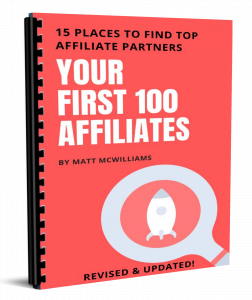 |
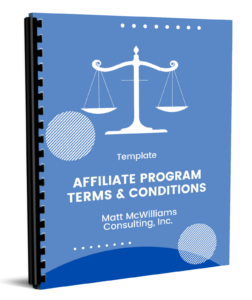 |
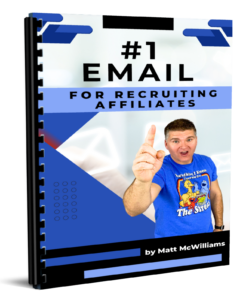 |
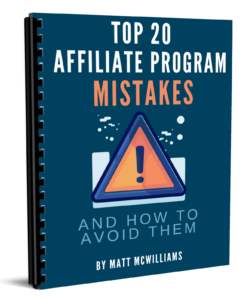 |
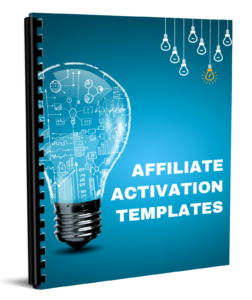 |
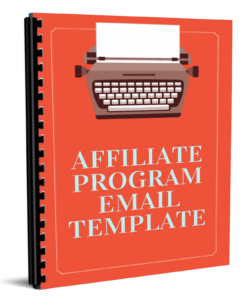 |
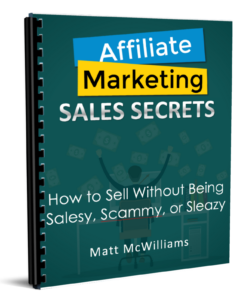 |
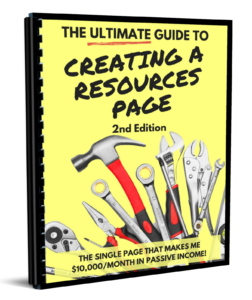 |
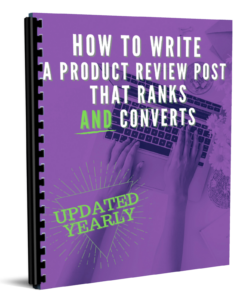 |
